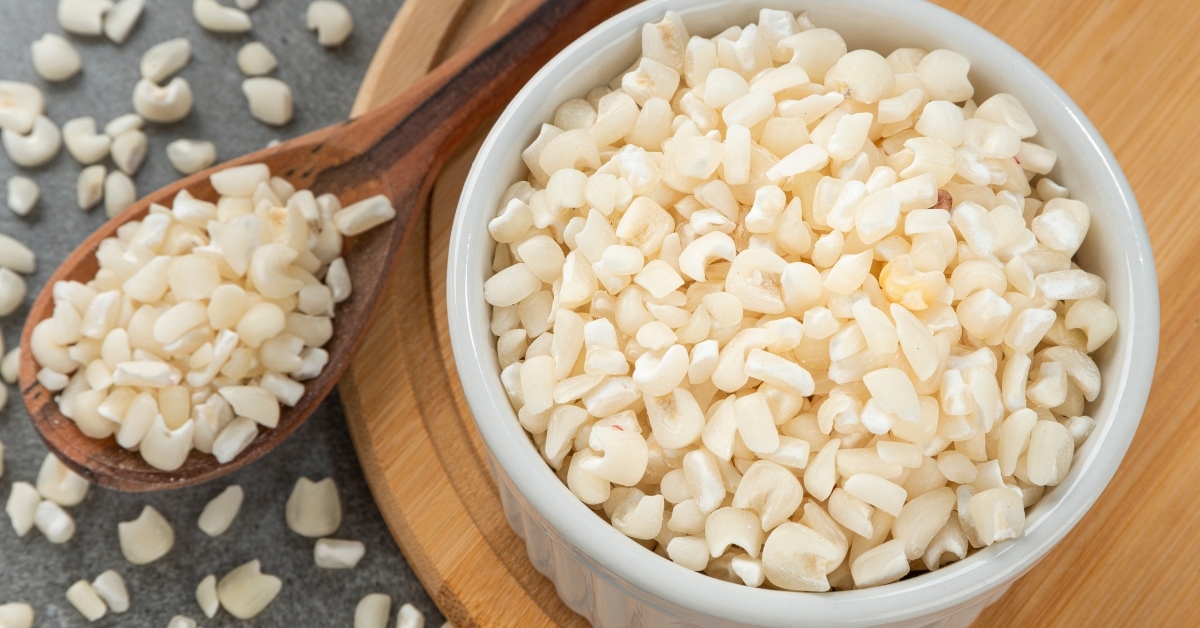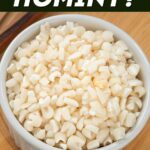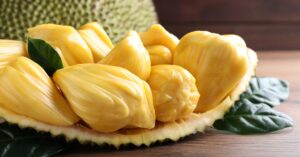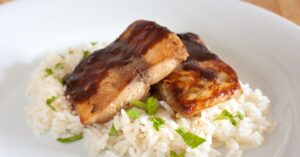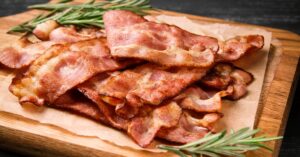What is hominy, you ask? You’ve come to the right place!
If you’re new to hominy, I’m sure you’re riddled with questions.
What does it taste like? How can you use it? Where does it come from?
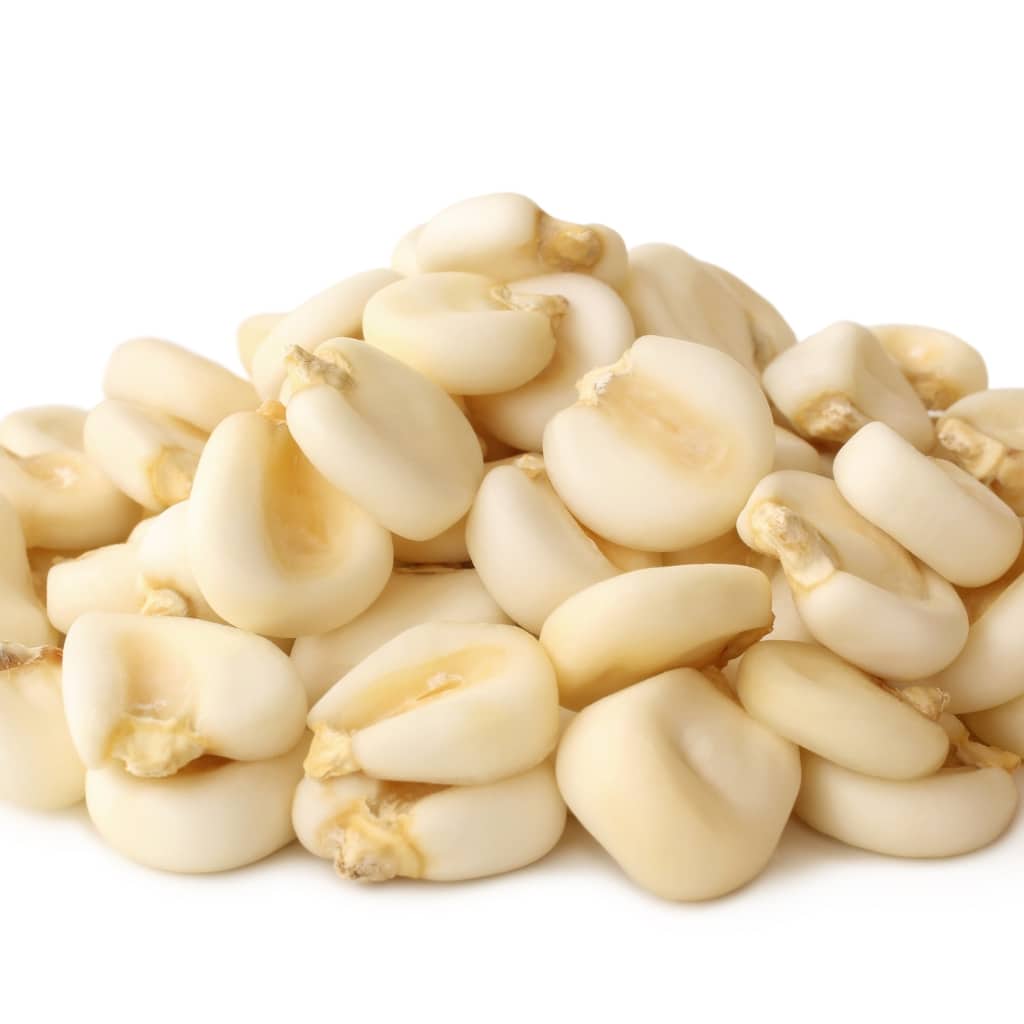
Hominy is a special type of corn that’s been around for centuries.
From Mexico to Jamaica, It’s widely used by many cultures. And there are plenty of ways to use it too!
Tortillas, grits, casseroles, stews, and beverages, hominy is very versatile.
From the taste to uses, we’ll cover everything you need to know about hominy.
What Is Hominy?
Hominy is a staple ingredient in Latin American and Native American cuisine.
In a nutshell, it’s a type of corn. But it’s not like the corn you toss on a grill and eat at a barbecue.
Rather, it’s dried field corn that undergoes a process called nixtamalization. This process is what makes hominy easier to cook with.
Also known as yellow or white maize, hominy kernels are treated with a solution like lye or slaked lime.
Lye to process corn? Yep, you heard that right.
The reason for the alkaline solution is to remove the outer hull and germ. And don’t worry, after soaking it’s thoroughly rinsed.
The process results in soft, puffy kernels with a slightly chewy texture and a unique flavor.
As you can imagine, it’s quite a time-consuming process. But the processing doesn’t stop there.
You do eat it, after all!
Once it’s ready, hominy can be ground into flour for masa harina. It’s also a base for stews, soups, and casseroles.
Go to an authentic Mexican restaurant, and you’re likely to see hominy on the menu.
In Mexico, you’ll find it in pozole and a drink called atole. Mayans used it to make an ancient beer called chicha.
Native Americans used hominy to make grits. Jamaicans even use it to make porridge.
And that’s just a handful of uses!
High in fiber, protein, vitamin B, and minerals, there are plenty of health benefits, too.
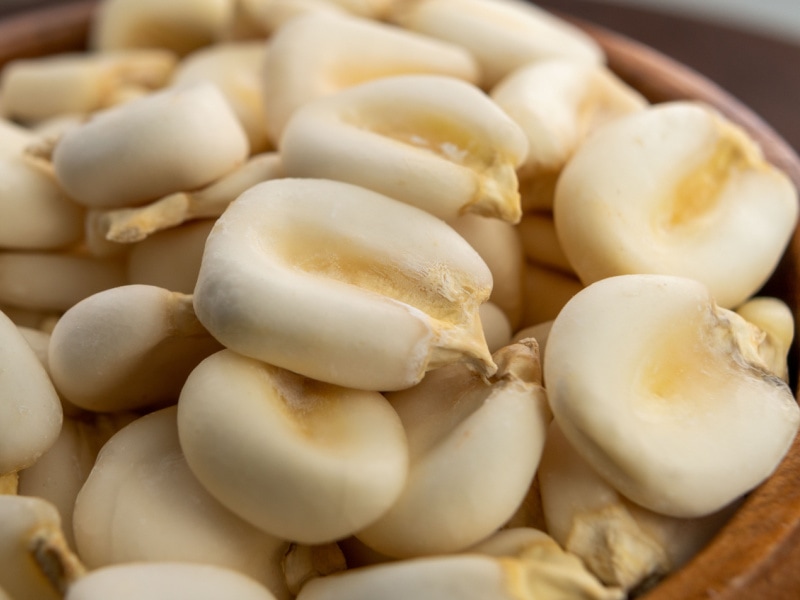
What Does Hominy Taste Like?
Hominy is earthy and mild like corn. Yet, it tastes more distinct and complex.
The nixtamalization process brings out different flavors.
It’s slightly nuttier, sweeter, and earthier than the corn you buy in the produce section.
It’s also fluffier, chewier, and meatier in texture.
Like yellow corn and white corn, the taste also varies between white hominy and yellow hominy.
Yellow hominy has a sweeter flavor than white hominy. Depending on what you’re making, that’s something to keep in mind.
Hominy vs. Corn (What’s the Difference?)
Hominy and corn are both maize. So what’s the difference?
Hominy is corn, but not all corn is hominy.
By looks alone, cooked hominy kernels are noticeably larger than raw corn kernels. Then there’s also the unique nuttier flavor.
The main difference, though, is how hominy and corn are processed.
Corn is often eaten right off the cob. You can enjoy it raw or cooked. You can also eat it fresh or dried.
Hominy, on the other hand, is dried. You can purchase it in its dried form or canned.
Also, the biggest difference is that it undergoes the nixtamalization process mentioned earlier.
After soaking in the alkali solution, it’s rinsed over and over. This helps to remove the bitter taste of the lye or slaked lime.
In the end, hominy develops a distinct flavor and texture that’s different from corn.
The process also makes it much easier to work with when cooking.
Pick some up and give it a try. You’ll instantly tell the difference between corn and hominy.
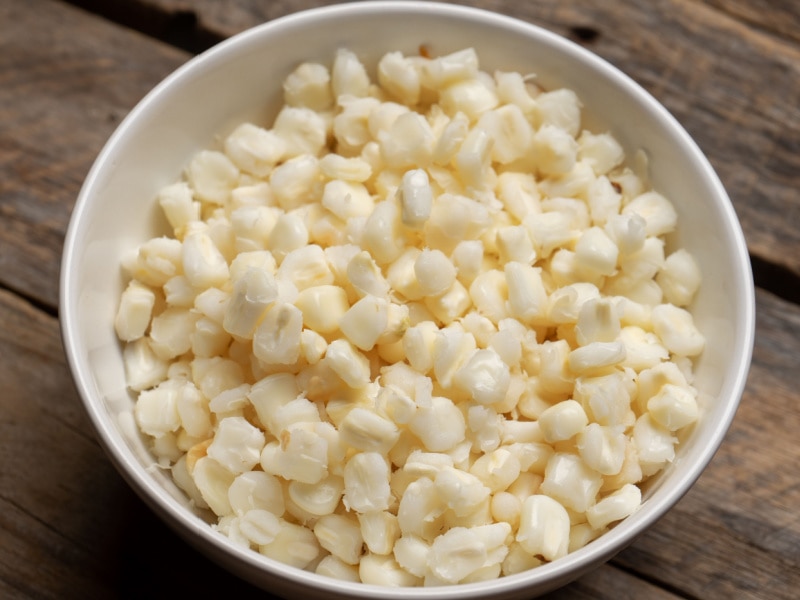
How to Cook With Hominy
Like corn, hominy is a versatile ingredient.
But before you toss it into a dish, you need to know how to prepare it properly.
Canned hominy is ready to use. Dried hominy, however, needs more preparation.
You have to soak and rinse the kernels like dried beans. Then, put them in a pot of water on the stove and let them simmer.
If you’re new to hominy, I recommend using the canned version. It’s a lot less tedious and you can use it immediately.
Despite which form you use, hominy is great in so many things.
To start, I highly recommend trying an authentic Mexican favorite like pozole.
This traditional soup features hominy, veggies, and meat like pork or chicken.
From there, branch out with other soups, stews, and casseroles.
If you’re feeling adventurous, use hominy to make homemade masa harina.
You can use that for tamales, pupusas, arepas, tortillas, and more.
But the hominy recipes don’t stop there!
Toss it in the Instant Pot, then season with salt and pepper for a simple side.
I adore it in a blue cheese casserole. It’s also a great addition to a bean salad.
Oh, and don’t forget about grits!
Where to Buy Hominy
Hominy is available at most major grocery store chains.
You’re most likely to find it canned or as masa harina in the aisle with Hispanic food items. Some stores sell the whole dried kernels, too.
Likewise, you can find it at local Mexican mercados and Hispanic food stores. It’s also available at other specialty stores.
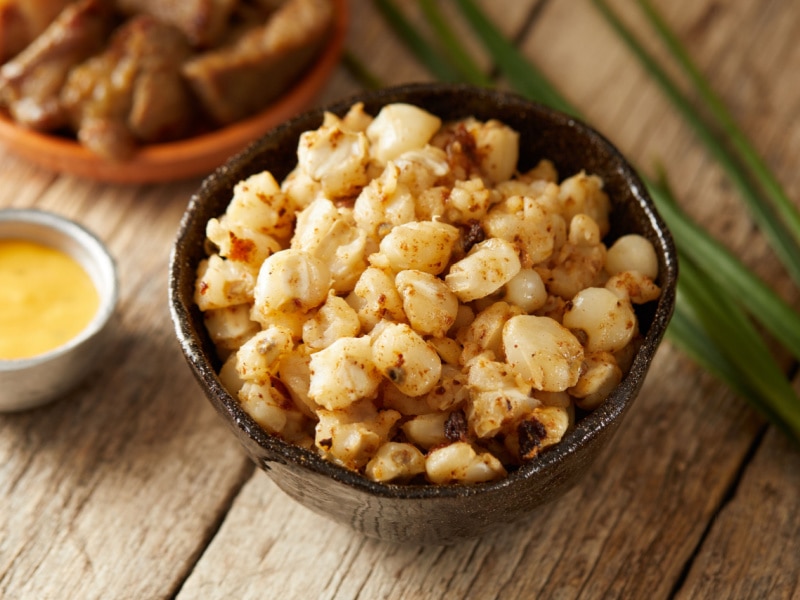
How to Store Hominy
Storing hominy is super easy.
Keep canned and dried hominy in a cool dry place like your other shelf-stable goods.
Once you cook dried hominy, place it in an air-tight container and pop it into the fridge. It will keep for about 5 to 7 days.
The same thing goes for an opened can.
If you don’t plan on eating it soon, you can also freeze hominy.
I recommend using it within 3 months. Longer than that and the quality declines.
Now that you know all about it, let’s head to the kitchen and start cooking!


